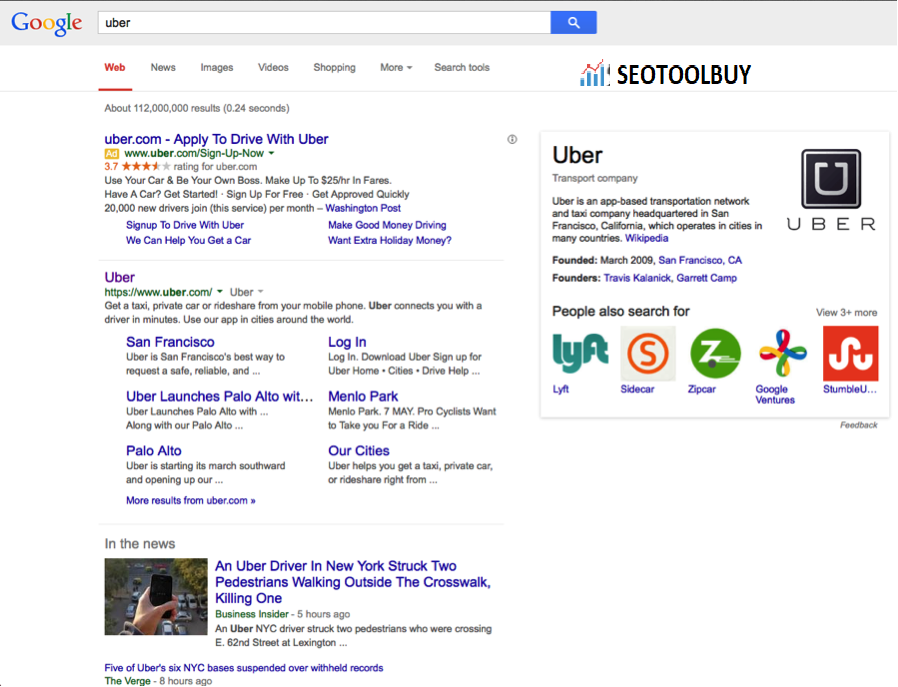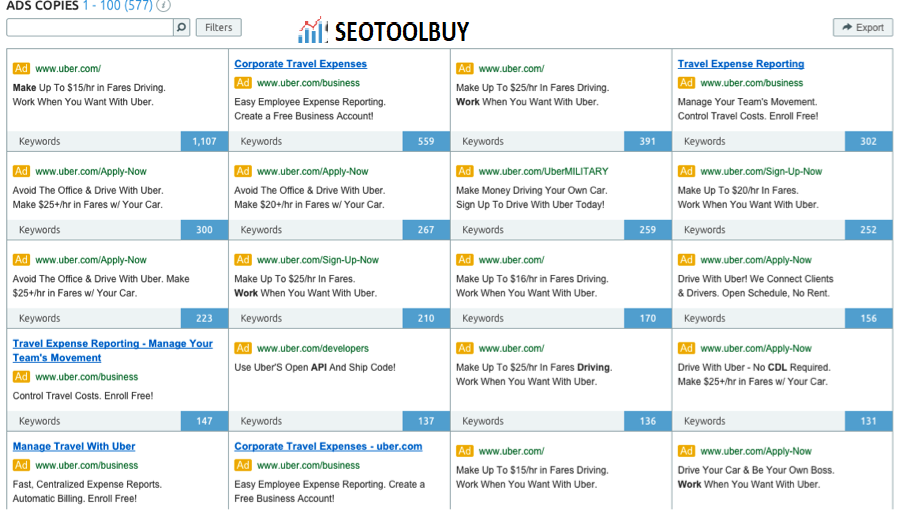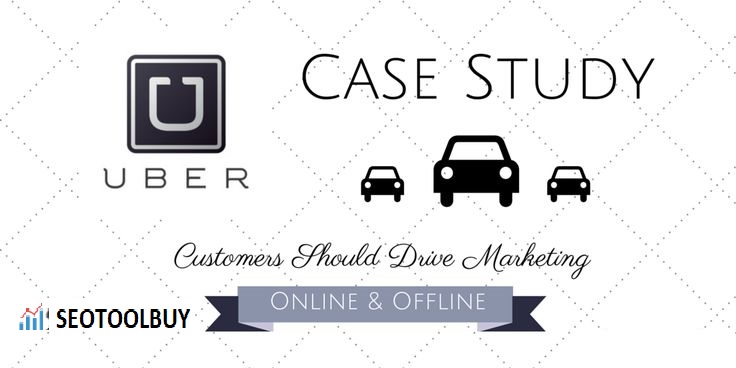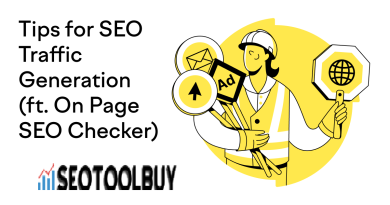Uber Case Study: Customers Should Drive Search Marketing
As more marketing dollars shift from offline efforts to online, the need for skilled search marketers is increasing. And as the demand for Internet marketers rises, the job responsibilities will continue to evolve. Uber Case Study
While in the past high rankings and a strong PPC impression share might have been enough to deem a search marketing campaign successful, as online becomes a larger share of a company’s market, traditional methods are no longer good enough.
According to a recent survey conducted by SurveyMonkey on the ridesharing industry, Uber, the ride-hailing company everyone loves, has the highest brand awareness when compared to any of its ridesharing competitors. And according to the results, this translates into lots of customers and high conversions. It’s safe to say that Uber’s marketing team is doing a enviable job at scaling awareness of their product all over the world, and they truly seem unstoppable.
However, there is one marketing channel that has some potential for improvement: search. As anyone that who regularly follows the news knows, Uber has faced some pretty significant legal challenges, including a couple of drivers who have allegedly committed violent crimes against customers.
Uber, understandably, may not want to address some of these concerns in their search snippets. But unanswered negative perceptions about their company could be costing them clicks; especially when some of the negative news is right on the search page.

In the survey about the ridesharing industry, “driver trustworthiness” was one of the top three concerns of the more than 1,000 people surveyed. The other top 3 concerns were “inability to accurately estimate prices” and “cost.”
While the ideal might be for Uber to neutralize any negative concerns about their brand, they could also just focus on the positive instead. Things the survey’s respondents loved the most about Uber were:
- Availability and quality of app
- Friendliness of driver
- Reliability
Uber Case Study in the SERPs
Uber could just as likely use their search copy to emphasize any of these popular benefits of their service. However, what they are actually doing is far off the mark:

Uber’s title tag does not include any other keywords other than the word “Uber.” This appears to be a huge missed opportunity not just for SEO, as they could be not only targeting some strong non-brand keywords, but also they could also use this space to specifically highlight their advantages.
As a comparison, here is Lyft. I’m not sure they’re using the best SEO keyword in their title, but at least it succinctly declares what they offer:

However, in my opinion, Uber’s biggest missed opportunity is their meta description, which in most instances would be their search snippet for brand queries. Uber could use their meta description to try to counter-balance some of the awful news that shows up in the Google News box by stressing some of their advantages.
For example, Uber can say they are safer or cheaper than taxis. It doesn’t whitewash the negative stories, but pointing out that regular taxis are also dangerous takes some of the sting out of the bad press. In reality, there isn’t anything that makes an Uber driver inherently worse than any cab driver.
And Uber doesn’t seem to do a much better job with their PPC campaigns either. Using SEMrush, I looked at the keywords that seem to be taking up a majority of their spend:
Most of these keywords are brand-related keywords. Uber has a very high level of brand awareness (according to the ridesharing survey) so anyone searching for their brand is a potential customer — they just need to be convinced to take the next action.
However, if you look at the ads that Uber is using, none of the ads
(at least the ones targeted at acquiring customers instead of drivers) directly address either strengths or user concerns.
Furthermore a user who may have heard of some of the surge pricing scandals from the media
and decided to check out Uber online might not feel very reassured seeing ads that mostly use money to lure in new drivers.

Offline and Online Marketing
When it comes down to it, search marketing cannot be conducted in a vacuum. Bidding on a high-paid search position or achieving strong organic rankings
is of little value unless search users will be inspired
to click AND fall into whatever sort of conversion funnel each site or product requires. With so much competition for the attention of users online
it is the biggest travesty to invest a lot of effort and budget
into achieving just the potential for traffic but then drop the ball when it comes to converting the impressions into users.
And just like in offline advertising where marketing placements and copy are intended to be related to the medium’s audience
the same thing needs to happen online. A BBQ restaurant wouldn’t advertise their steak sandwich in a vegan newsletter, but might instead promote their non-meat offerings.
Similarly your online marketing needs to speak to the intent of the user’s query
if you have any hope of getting the click and making a sale.
Making a compelling case is even more difficult online since you are directly competing with other paid and organic results on the very same page;
therefore you need to exert extra effort to ensure your search snippets present your strongest value proposition.
Fortunately when it comes to online offerings there is plenty of customer data
that can help you figure out exactly what the intent is
— and then use this data in your organic and PPC marketing.
If Uber would implement a PPC strategy based on customer data
they could use ad copy that played up their cost advantages over traditional taxis
and the trustworthiness of their drivers over the crapshoot of hailing a taxi. Without testing, it would be impossible to know exactly what will work for them, but not showing any user benefits certainly is not the best strategy.
While Uber is a good example of a company with high brand awareness that has gaps in their search strategy
you can (and should) use customer and benefit data to improve your marketing.
Here are 4 things you can do right now to take advantage of customer data in your search marketing campaigns:
- Discover your perceived strengths and weaknesses. This can be anything from informally polling your customers or using an actual market research tool like SurveyMonkey Audience.
- Make sure your ad copy doesn’t just use taglines but speaks to your advantages and maybe even attacks your negatives head on.
- Do keyword research to put your best keywords in your title tag. But if you aren’t going to do that, at least include phrases that help sell your business.
- Write a meta description that fits in the context of the entire search page. If you are one of many results that will rank on the term, use your advantages to highlight why you are better. If you are on the search page along with potentially negative news stories, make sure your snippet can counteract them.
when you think of the full customer journey and not just rankings and clicks. The most important factor — and what keeps your paychecks coming — is sales. Use the data from past customer interactions to supercharge your digital marketing efforts.
Remember, a #9 Google ranking that drives lots of sales is far better than any #1 ranking that doesn’t.



